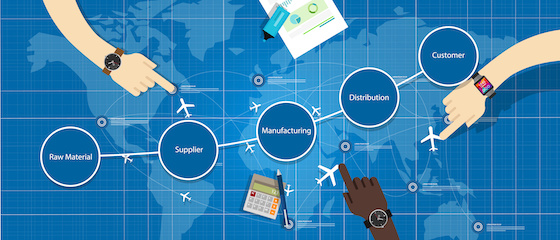
We can all remember the supply chain issues of the pandemic, when we drove around town to multiple stores in search of toilet paper, yeast, and face masks. Now store shelves are filled with products again. But we still havre supply chain issues.
Supply chain issues that began with the COVID-19 pandemic continue to disrupt the smooth flow of goods around the world. Some of the causes are lingering effects of the pandemic: lockdowns and social distancing measures implemented during the pandemic continue to cause ripple effects. Factory shutdowns and labor shortages in key manufacturing hubs, particularly China, are still impacting production.
But now we’re also seeing disruptions from geopolitical tensions. The ongoing war in Ukraine and strained relations between the US and China are creating additional uncertainties. Sanctions, export restrictions, and rising energy prices can disrupt established trade routes and increase transportation costs. Terroristic attacks in the Suez Canal and the closure of the Port of Baltimore are specific examples of the ways world events can affect supply and distribution.
Labor shortages are another factor in the ongoing supply chain instability. Many countries, including the US, are experiencing labor shortages across various sectors, including transportation and logistics. This can lead to delays in loading and unloading cargo ships, trucking goods overland, and staffing warehouses efficiently.
Demand-side issues
Even as transporting goods continues to be challenging, changes in demand are having their own effects. As economies rebound from the pandemic, consumer demand for goods has surged. This sudden spike can overwhelm supply chains that haven’t yet fully recovered from pandemic disruptions.
The pandemic also led to a rise in e-commerce, putting additional strain on delivery infrastructure. More people are using Instacart and Door Dash to avoid shopping, having taken up the practice during the pandemic and fallen in love with the convenience. This shift in consumer behavior requires adjustments in warehousing, packaging, and last-mile delivery strategies.
The big picture
Imagine a product assembled in China. The factory might be facing labor shortages, hindering production. Geopolitical tensions might make it more difficult to source certain materials. Once the product is complete, it might get stuck waiting days or even weeks for a ship at a congested port. The lack of available truck drivers might further delay its delivery to warehouses and stores.
These issues are interconnected, creating a domino effect that disrupts the timely flow of goods.
What are potential solutions?
- Investing in automation: Embracing automation technologies in manufacturing and logistics can help address labor shortages and improve efficiency.
- Diversifying production: Spreading manufacturing across different countries can lessen reliance on any single region and mitigate the impact of geopolitical disruptions.
- Improving infrastructure: Upgrading ports, transportation networks, and warehouse facilities can help manage increased cargo volumes and streamline logistics.
- Strengthening collaboration: Closer collaboration between governments, businesses, and transportation providers can improve communication and coordination across the supply chain.
Overall, overcoming supply chain issues requires a multifaceted approach. Addressing these challenges will take time and continued efforts to build resilience and flexibility into the global supply network.
